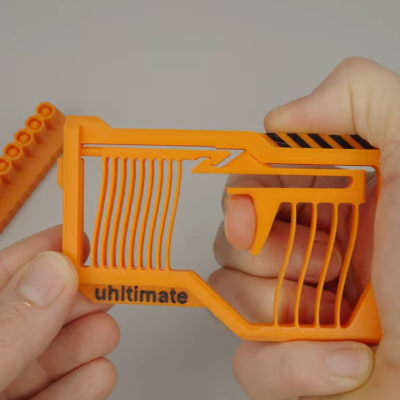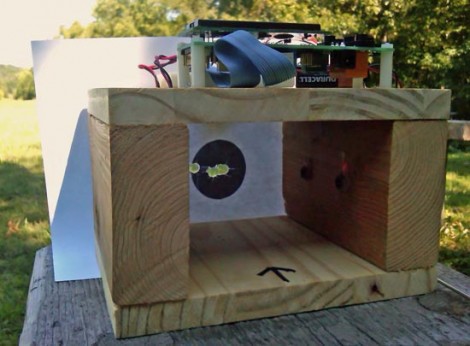The ease of integrating bendy parts into designs is one of 3D printing’s strengths. A great example of this is [uhltimate]’s six-shot blaster which integrates several compliant mechanisms. The main blaster even prints in one piece, so there’s not even any assembly required.

The blaster itself has three main parts: the trigger, the sear, and the striker. Each of them rely on compliant mechanisms in order to function. The user pulls back the trigger, which hooks into and pulls back the striker. When the trigger is pulled back far enough, the sear releases the striker. This zips forward and slams into a waiting projectile, sending it flying.
The other interesting part is the projectiles and magazine in which they sit. The magazine fits onto the front of the blaster and pulling the trigger allows the magazine to drop down, putting the next projectile into firing position. After the final round is fired, the empty magazine falls away. It’s a pretty clever design, even if the ergonomics are a little unusual and it relies on gravity in order to feed. Tilt it too far sideways or upside down, and it won’t load properly.
We’ve seen compliant mechanisms used for projectile firing before, but this design really raises the bar in the way it does more than just firing the striker.
3D printing allows rapid iteration of designs, which makes devices that rely on compliant mechanisms much easier to develop and fine-tune.
Continue reading “3D Printed Blaster Does It With Compliant Components”















